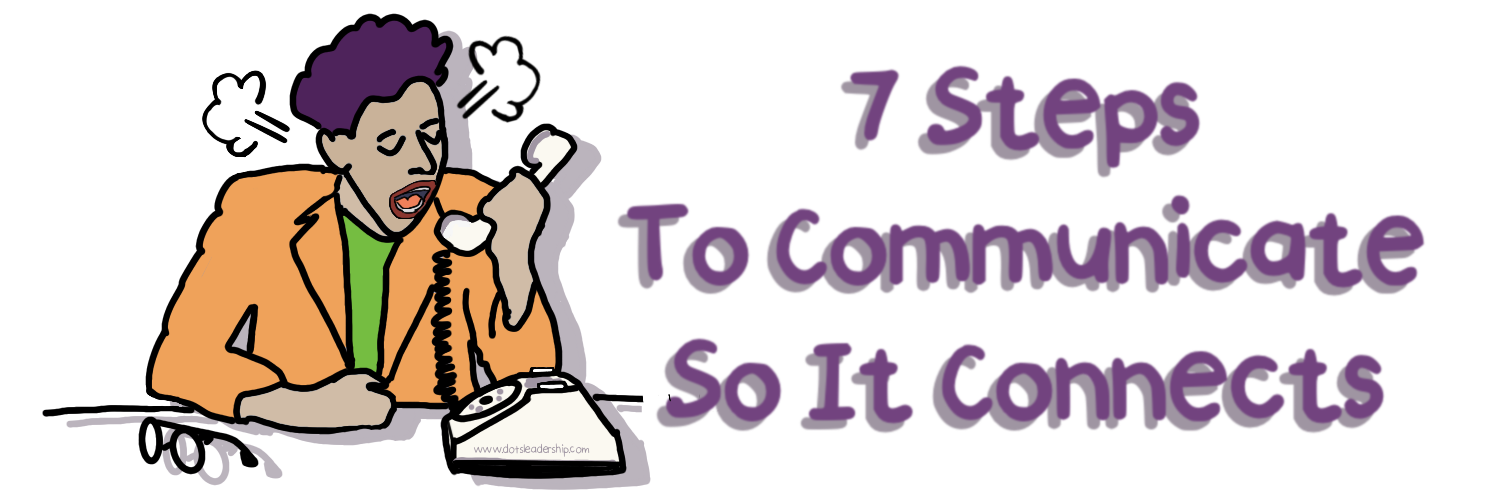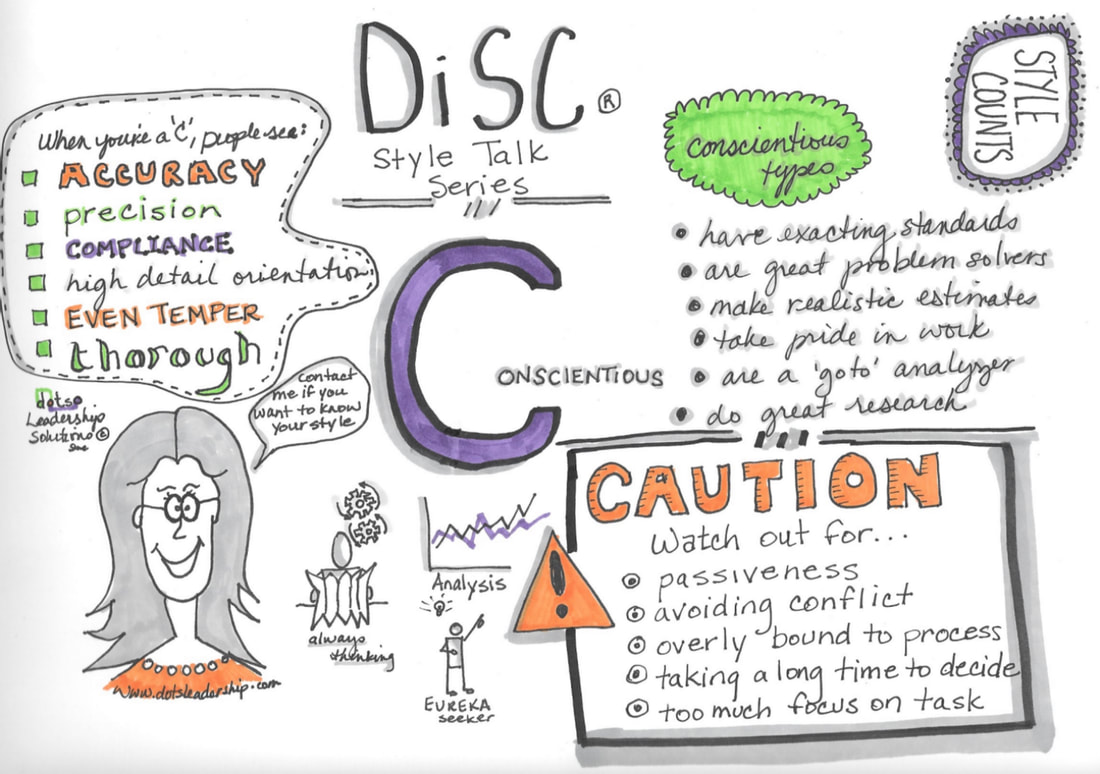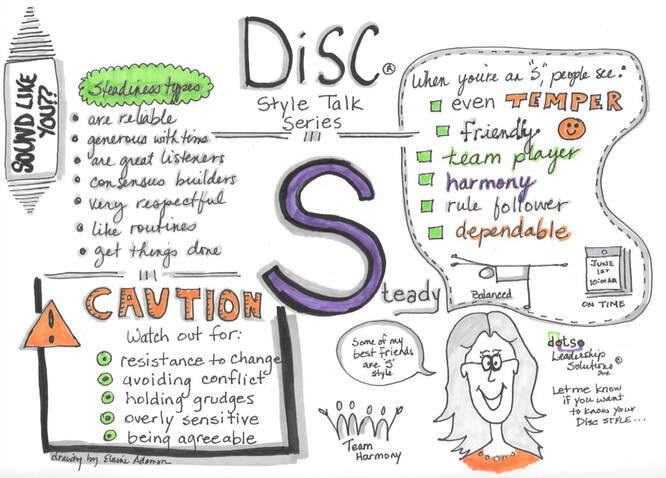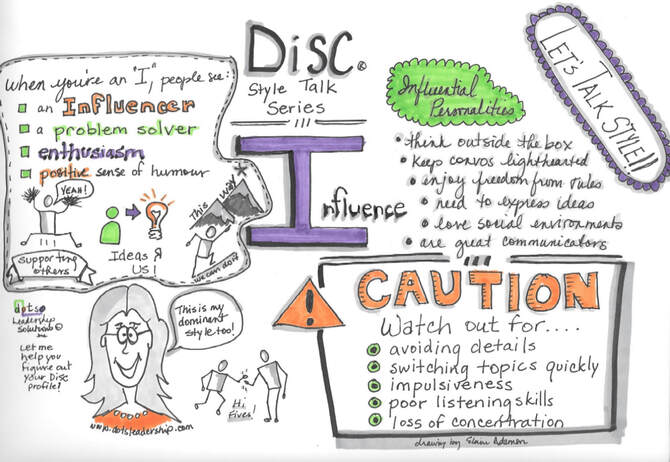Poor Communication = No ConnectionThese days, with all the tools we have available, we are far more connected and capable of staying in touch than ever before!
So don’t you find it a bit ironic that in today’s workplaces, lack of communication remains one of the biggest issues for employees? Regardless of the industry or size of company! Here’s the thing - if your team doesn’t feel heard, they don’t understand the direction of the company, never get constructive feedback, or they don’t think you care about them as a person, then why would they give you their best work?
0 Comments
Thanks for returning to my series about difficult people – I'll be interested to hear what do you think, so far? Do you see how difficult people can be a competitive advantage for your team? Let me know in the comments below. To recap part one of this series I began with “The Know All” (TKA) personality type, you surely know someone who embodies those traits. For part two I spoke about “The Revolutionary (aka TNT) type” who are seldom satisfied with the status quo. For part three I will shed light on the all too familiar, yet quite challenging, difficult ‘Take No Prisoners’ (TNP) personality type. Consider ‘the Donald’ reporting to a leader in a business setting. Yes, that is this rebel style. What do you think, difficult to manage? Oh my, heck yeah! A true leadership test. You may be surprised to know there ARE ways to harness the power of this rebellious in-yo-face type when they report to you (not so easy to when they are running a country). When you guide them the right way, you create a powerhouse talent on your team and even better, leave a lasting positive impact in your company. Meet Liam – The Gun-Slinger Liam (names changed) is an up-and-coming, newly promoted executive in telecommunications. He is 33 years old and incredibly clever. So much so he has been promoted rather quickly. Over a 5-year period he has moved up three times (unusually fast) and is now at the Director level with eyes locked and loaded for a Vice President’s seat. He has been told he has “CEO potential”, which is amazing BUT he tends to share that info with others in an obnoxious ‘boasty’ sort of way. Highly strategic and a quick study, he has demonstrated value in every role very quickly. Liam is highly action-oriented, capable to make change and adapt rapidly. Managers who promoted him looked past some of his behavioural shortcomings for political reasons - because the top bosses really like his boldness. Leaders fanned his fiery flames, instead of providing candid feedback and guidance, for fear they may be seen as a roadblock to his rise up the ladder. When his newest manager Claire, VP Ops (seriously, not her real name or title) reached out for my help, she told me she inherited ‘a blow-hard, pompous, egotistical jerk.’ Claire was ultra motivated to find 'something' to hit home with him before everyone quit on her team. When we started, she was at her whit’s end. Liam is the quintessential Take No Prisoners (aka TNP) profile. The Take No Prisoners profile:
The benefit of having a TNP on your team – quick decision makers, they assess risk swiftly, are very determined, action oriented, inventive, shrewd and persistent. The key to leading a TNP is trust and mutual respect. Set high expectations regarding their behaviour; hold a mirror up to see results of their approach; be liberal with praise at the right times. Listen to their ideas, positively reinforce relationship building, and be candid with feedback that will benefit them with very firm correction if they appear to burn a bridge – they appreciate that directness. Caution for leading a TNP – they require a firm leader whom they respect or they will undermine your efforts. Do not do battle with them as they are very clever, set clear boundaries early on, then hold them to those. The Outcome My approach was to have her build a real genuine connection and be very firm with expectations and harness the positive side of his traits. Claire began to develop two-way trust with Liam:
I hope to become an executive coach to him one day and if I do, I won’t pull any punches. He needs direct feedback to help him succeed; learn how to flex his style yet capitalize on what makes him a powerhouse in business. Could people perceive YOU to be like Liam? Or do you know anyone with this style? Help is Available For every difficult type of person there is a way of connecting to the jewel that may be under a rough exterior. It can take a bit of work on your behalf but having distinctly different personalities on your team can become a strong competitive edge as well as a leadership legacy. If you are suffering with a difficult person on your team (or your boss) and you’d like help to figure out how to communicate better with them, send me an email. There are numerous ways to connect! If you aren’t on my mailing list, you’re missing out on other juicy tidbits to become an effective leader. It is never too late to sign up! I have sign up links all over my site, for your convenience. 🙂 Photo by @anneniuniu on Unsplash
According to Gallup State of the Global Workplace, 85% of employees worldwide are not engaged or are actively disengaged in their job. “The low percentages of engaged employees represent a barrier to creating high performing cultures around the world. They imply a stunning amount of wasted potential.” Wasted potential. How that phrase resonates with me! Death by Administration I'm sad to say, I was one of the walking ‘wasted potential’ not too many years ago. It was a dark and miserable time. My employer was doing a massive restructure, removing spans and levels of management and it was my job, as the HR lead, to implement it for my division. Unfortunately the process they undertook was more of a spreadsheet exercise, versus strategic. So the work I loved and excelled at suddenly switched from senior level advisory work to a massive load of mundane administrative tasks Every. Single. Day. , and it went on for months. This kind of work was my worst nightmare and even though it is hard to admit..I have never been very good at mind-numbing administrative work. It just wasn't the right work for me. What a complete waste! Wasted potential. People can’t thrive when they are doing the wrong work. It devalues them, misuses talents and creates unnecessary pressure. During stress-filled change, leaders can fall asleep at the helm; too busy ducking for cover, they completely overlook the signs of utter disengagement around them. Don’t waste your best resources like that; you will surely lose your highest potential people when you don’t pay attention.
Expert Lessons A great way to stem the tide of employee disengagement is to tap into the abilities of EACH and every person on your team. Get people doing the right work utilizing their best skills, long before a change occurs. According to Gallup's survey analytics it is your high potential talent that will take a walk if they are not engaged, long before the others. These top talent are the experts to learn from! Here is what top talent say will help keep them: Lesson 1
Lesson 7
Engagement Counts The best leaders demonstrate they care about each and every team member by taking an interest. They pay attention, particularly during stressful times, leveraging potential vs wasting it. They make it a practice to develop potential, all the time. They allocate work in a way that plays to their people’s strength and they keep them connected to the bigger picture. When you demonstrate YOUR engagement, harnessing the potential of your best and brightest, you are guaranteed better results for highly engaged employees. If you have a disengaged team (or team member) or are leading through stressful times and need support, I’m only an email away! I help leaders grow and develop by working with them through the toughest of times. I offer a 30-minute free consult. I want to hear from you, tell me about your own experience in the reply section below. Image: CC0 Creative Commons/Pixabay
Last month we focused on the letter “S” – Steadiness of the DiSC behavioural style.
This month concludes the Style Talk Series as we focus on the profile “C” – Conscientious characteristics. You may also like to review the first two parts of the series focusing on the profile "D"- Dominance, or focusing on the profile "I"- Influence. As previously mentioned, in each article I am highlighting real-life clients who tend to illustrate a strong profile of just one of the DiSC behavioural traits. You will have different degrees of each behavioural style in your own profile but you tend to have a dominant style that many at your work will witness. How you behave compared to people with differing styles to you may be quite different, even when presented with the very same scenario. Meet Nadeem (not his real name) Nadeem is an Accounting Advisory Executive with a leading professional services firm. Nadeem has traveled the world, offering advice on accounting and risk management for 15+ years and is considered a leader in this field. Nadeem has led large, matrixed teams, working on highly complex projects with large multi national corporations providing advice and guidance on Accounting and Tax.
We have identified for Nadeem that he needs to pick up on social cues and demonstrate interest in others. This includes taking a brief time in the first part meetings to greet people and chat for a moment, assess his audience then communicate in a way the other party feels valued. Nadeems’s development plan includes coaching on relationship building. Some areas include meeting preparation; helping him to assess the people he will meet so he is more prepared to make the right first impression. Also we are doing DiSC assessments with each of his direct team to help him decode their styles. Lastly he is working with an internal mentor who has the exact opposite style to his so they can learn to appreciate their differences. In future this will arm him for analyzing people and provide a roadmap for flexing his communication style accordingly. Do you know anyone like Nadeem? Or can you see yourself in his profile? He is a good representative of a strong “C” behavioural style. Can you imagine how it may benefit to you to better understand your own DiSC style and how your style may impact others? Once you see how your style affects people you work with, you can adapt accordingly. Likewise as you leverage team dynamics using DiSC assessment, you can find ways to pair people for the best outcomes as well as anticipate where friction may occur. Do you want your own DiSC Assessment? Email me to reveal the secrets of success. Everything DiSC Workplace® assessment is a great tool to use with your whole team. This assessment will decode how best to communicate for your own success. It makes a great foundational piece for business planning, improving employee engagement and team development. Not only will you receive a detailed report but I will also provide a confidential debrief that delves into your personal profile and/or team dynamic. Drop me a line when you’re ready to learn more about yourself and discuss potential career/leadership derailers so you know how to head them off! Last month we focused on the letter “I” – Influence of the DiSC behavioural style and previously we focused on the “D”.
This month we will continue the Style Talk Series focusing on the profile “S” – Steadiness behaviours and communication characteristics. As I mentioned before, the clients I highlight tend to be symbolic of a strong profile of just one of the DiSC behavioural dimensions, this month using the “S”. In your own DiSC profile you will have differing degrees of each behavioural style. That said, people at work likely have observed your most predominant one because when you are under pressure your most dominant style usually shows up. There is no perfect style, no right or wrong either; just like people are from different backgrounds, we each view a situation and react uniquely because we are approaching it from a different vantage point. This series is to help introduce the benefits of understanding your style. Meet Melissa (not her real name) Melissa is a Senior level Human Resource Business Partner for a global financial institution. Melissa has been in HR (different departments) for most of her 20+ career. She currently supports over 40 executives (various levels) who collectively have over 2000 employees. Her day-to-day work is strategic, focused on providing business executives’ HR advice, shaping and implementing strategic plans. Melissa is keen to be promoted to VP level.
We have identified that for Melissa to move up, she needs to command more authority. Colleagues, leadership and clients enjoy working with her but to be ready for the next move she has to prove she can manage conflict directly and comfortably. Showing she can stand her ground and be more direct in her communications will give senior leaders more confidence in her capabilities at the next level. Melissa’s development plan includes coaching courageous confrontation, role-playing in a safe environment using real-life scenarios and critiquing conversations. Through routine practice she will develop comfort in finding her voice, without sacrificing her strong values for harmony. Do you know anyone like Melissa? Or can you see yourself in her profile? She is a good representative of a strong “S” behavioural DiSC style. Imagine the benefit to you to better understand your own DiSC style and how you impact other people? Once you see how your style affects people you work with, you can modify appropriately. Likewise when your team uses DiSC assessment as a development tool, you will better understand the dynamic of everyone within the team. Some people may be a lot like you when others are not, you will see how to get the best out of everyone when you learn how to communicate to their style. Time for your own DiSC Assessment? Email me to reveal the secrets of success. Everything DiSC Workplace® assessment is a great tool to use with your whole team. This assessment will decode how best to communicate for your own success. It makes a great foundational piece for business planning, improving employee engagement and team development. Not only will you receive a detailed report but I will also provide a confidential debrief where we will into your personal profile and/or team dynamic. Drop me a line when you’re ready to learn more about yourself and discuss potential career/leadership de-railers so you know how to head them off! Last month we focused on the letter “D” – Dominance of the DiSC behavioural styles.
This month we will continue the Style Talk Series focusing on the profile “I” for Influence behaviours and communication style. I personally relate most with this dimension myself, though not quite to the same extreme as my client. As you will see, the client I am highlighting tends to be emblematic of a strong “I” profile which is just one of the DiSC behavioural traits. You will have varying degrees of each behavioural style in your own profile but we all have our ‘go to’ dominant style that others tend to see, particularly under stress. Two people may react quite differently when presented with the same situation, depending on their dominant behavioural style. Meet Daniel (not his real name) Daniel is a Senior Vice President for a national Sales organization that employs 4000+ people across Canada. Daniel worked his way up to a senior level over 18 years of progressive moves. He joined the company directly from University, when he began as an intern in Customer Operations gathering customer information from clients to prepare for year 2000 cut over.
For Daniel to continue to move up in the organization he must take more time to consider data and facts; use solid supporting evidence to help formulate decisions, and incorporate facts into his narrative. He is seen as a promotable resource for the business, he may be considered for President or CEO of a smaller division in the future. Daniel’s development plan includes an executive coach (external) as well as internal mentorship from the CFO, who is giving him guidance and support to develop data-driven decision making. Do you know anyone like Daniel? Or do you see yourself in his profile? He is a good representative of a strong “I” behavioural style. Can you imagine the benefit to better understand your own DiSC style and how you may impact others? Once you grasp how your style affects people you work with, you adapt accordingly. Likewise as you build a team, you can better understand the dynamic of everyone within the team. Some may strike sparks with you, yet they bring tremendous benefit overall when you learn how to communicate to their style. Time for Your Own DiSC Assessment? Email me to take advantage of the insightful perspective of Everything DiSC Workplace® assessment or to arrange a session with your whole team. This assessment will decode how best to communicate for your own success. Not only will you receive a detailed report but I will also provide a confidential debrief where we will delve into your personal profile and/or team dynamic. Drop me a note when you’re ready to learn more about yourself and discuss potential career/leadership de-railers so you know how to head them off! Ever work with someone whose style drove you crazy? Perhaps they talked too slow or fast for you, were overly demanding or passive, very logical or maybe they talked so much about feelings and relationships to the point it made it difficult to get down to business? The list of bugaboos vary because what bugs one person, may not bother another to the same degree.
We each have a unique combination of behaviours and priorities; they show up as our style to others. When you work with someone whose blend is quite different to yours, they will likely strike a nerve - when you're not well-armed to understand where they are coming from. Assess for Your Own ‘Ah Ha!’ Moment One way to ease this kind of discord is to conduct an assessment that decodes both you and your team’s behavioural styles. A tool to understand clear preferences and what they prioritize compared to you. My tool of choice is a DiSC® model behavioural assessment tool – Everything DiSC®Workplace by Wiley Brand. It's simple, yet uncovers ‘pinch points’ quickly with leaders and/or their teams so they can adjust immediately. This tool works for building better cohesion in a team, improving communication, reducing tensions, but also offers self-awareness for leaders I coach, most of whom have a few ‘ah ha’ moments as a result! Over the next series I highlight each one of the four dimensions of DiSC® characterized by people I’ve worked with (names changed, of course) quick links below: DiSC®Background Harvard psychologist Dr. William Moulton Marston created the theory of DISC® in the 1920’s, illustrating that people exhibited emotions through four ‘Normal’ behaviours of Dominance, Inducement, Steadiness, or Compliance – aka DISC® In the 1950’s an industrial psychologist named Walter Clarke went on to create the first assessment using the DISC behaviours Marston founded. Over the years the assessment has been improved and updated but the principles remain the same. Today we use the terms: Dominance, Influence, Steadiness and Conscientious in the assessment. First lets start with the profile of “D” – Dominance. Meet Belinda (not her real name) Belinda is a Vice President in a Customer Service group (Canada) of a large multi national company. She moved up through the ranks fairly fast. Here are some of her traits and behaviours that demonstrate a strong “D” profile:
Do you know someone like Belinda? Or can you see a little of yourself in her profile? She is a good representative of a strong “D” behavioural style. Most of us have behavioural styles with varying degrees of each of the 4 DiSC® dimensions so certain circumstances may bring your “D” more to the forefront. For Belinda to be considered for future, more senior level roles she must make an effort to develop work relationships by recognizing the opinions, feelings and ideas from others. Taking time to get to know people versus putting them to work. Without some coaching, guidance and support from others, Belinda’s trajectory in a large multinational company will surely be hampered. Much of her advancement will depend on whom she reports to and whether she reigns in her power punches! Can you see the benefit to you to better understand your own DiSC® style and how you may impact others? Or to decode your team members so you can find the right way to communicate with them? Get Your DiSC® Assessment! Email or call me to take advantage of the eye-opening perspective of Everything DiSC® Workplace assessment or to arrange a session with your whole team. This assessment will surely provide a clearer understanding of how you affect others and decode how best to communicate for your own success. Not only will you receive a detailed report but you will also have a confidential debrief with me where we will delve into your personal profile and/or team dynamic. Call or email me when you’re ready to learn more about yourself and discuss potential career/leadership de-railers so you know how to head them off! Hire The Right Person FastIf you’re like many of my clients, you have probably posted a job to fill, only to find yourself sifting through 200+ UN-qualified applicants.
With the likes of Monster, Indeed and Career Builder simplifying the job hunting process has made it easy for what I call 'serial job seekers' to blast out applications to a mass number of postings without even reading the full job posting. But this doesn’t help you—you need to find the ‘right’ person to without wasting your time! This means you need to be extra diligent in your quest to hire, in order to reduce the number of serial job seekers you encounter. To help you find the right fit for your new role, follow these top 5 tips… How to Deal With Difficult People On Your TeamOne of the most frustrating and time-consuming aspects of every manager’s role is dealing with a difficult person on their team. But getting good at managing the most challenging employee can be well worth the time and effort invested, even if it doesn’t seem it at the time. Not only will you demonstrate top-notch leadership skills to ‘the powers that be’, but you’ll also be role modelling for those you are developing to be a leader – which looks great on you! There are all kinds of difficult people to manage or to work with: the know-it-all’s, passive-aggressive’s, quiet sulker’s, loud mouths, pity partier’s etc. And while you can develop specific strategies for managing each type, I have found there are a few general approaches for dealing with ANY difficult person that are often successful: 1. Understand Your Own Type I know what you’re thinking…’Hey, I’m not the one who is difficult, so why start with me?’ Well, that is because when you understand yourself, you can better strategize how to flex your style to effectively communicate with others. It also helps you recognize why some people drive you to the brink and press your buttons more than others. There are many assessment tools that can be used to develop a greater understanding of your own personality type and how you affect others. DISC, Kolbe and Myers Briggs are quite common and a good place to start; it doesn’t matter which tool you use as long as you do the homework on self-discovery. 2. Understand Each Of Your Team Member’s Type Unsurprisingly, I also recommend understanding the personality type of each of your team – not just the difficult one! Teams are like living organisms; they have reliance and dependency on one other. People get along much better when they learn to appreciate the nuances and differences of each other. Personality assessments provide a non-threatening, consistent language that facilitates the breaking down of communication barriers. 3. Be CANDID! This is not for the faint of heart. Being clear and candid with a difficult person is not easy for most people, yet it is the single most important first step in managing the situation. Regardless of the different types of ‘difficult people’, when you can articulate the issue head on, you’ll make better progress. Help them to understand how their behaviour is impacting the office, the team or any key stakeholders. Good ol’ Dr. Phil says, "You can't change what you don't acknowledge", and that holds true here too. You have to call out what the problem is, particularly when it is causing trouble with others. The way to do this is by clarifying the effect the person’s behaviour is having on others without judgement and blame. A great reference for how to frame these conversations is a book called Crucial Confrontations. Just as the title implies, confronting is crucial! Regardless of how awkward the situation, when you deal with it with compassion and the right intentions, you can work with the person to find solutions. 4. Look For An Underlying Issue I’m not saying you should give them an excuse for their ‘difficult-ness’, but you may find that something may be at the root of their behaviour issues and knowing this will give you a clue for how to manage it. I once worked with a man who, when heard on the phone with his wife, was clearly in a dictatorial relationship – he was a doormat at home, but a tyrant at the office! Once we realized that he had a need to feel in control because he had zero control outside of work, we were able to adapt how we dealt with issues to give him some measure of power within his work. Very quickly, he stopped battling everyone else. Simply put, if you can spot the underlying issue, you can adapt your response. It takes a little thoughtfulness, but it absolutely works. 5. Tap Into Empathy Sometimes you have to walk in someone else’s shoes to understand where they are coming from. Try to put yourself in their situation to understand their point of view before jumping to conclusions. Did you know CCL research shows that, “Managers who show more empathy toward direct reports are viewed as better performers in their job by their bosses.” In today’s social media rich world we are terribly quick to label a difficult person and criticize before taking time to understand who they are and how they view life. In the workplace, it is a big win when you can find the bridge into their way of thinking – you can then help by making a connection and break down the issues. 6. Accept 100% Responsibility For Your Response I often say, no one can make you FEEL anything – how you choose to respond to any tough situation is all up to you. The fact that someone is driving you crazy is a direct reflection of how you are responding to somebody else’s ways. This is completely within your control. This is a tremendously liberating concept when you realize you have the ability to control your response. Brian Tracy - Free Your Mind: How You Are Responsible offers a great snapshot for just how to accomplish this! When it gets really tough dealing with a difficult person and you are about ready to give up or you’ve been trying to follow HR guidance and still not getting at the heart of the matter, give Dots Leadership Solutions a call – we have a kit bag of approaches that have worked very effectively. We also have some great assessment tools and can be available to plan for or facilitate discussions if you need an objective third party! Image from Pixabay CC0
|
Most Popular Posts:
AuthorElaine Adamson is a leadership consultant with Dots Leadership Solutions Inc. A natural dot connector. Passionate about coaching team effectiveness and leadership development she shares over 25+ years of real-life tips and tricks that really work! 
Elaine believes you can discover and leverage strengths to forge a strong team dynamic despite business challenges or organizational change.
She posts some great articles on Linked In too! Topics of Interest
All
Archives By Date
November 2022
|
Specialties |
Company |
|











 RSS Feed
RSS Feed